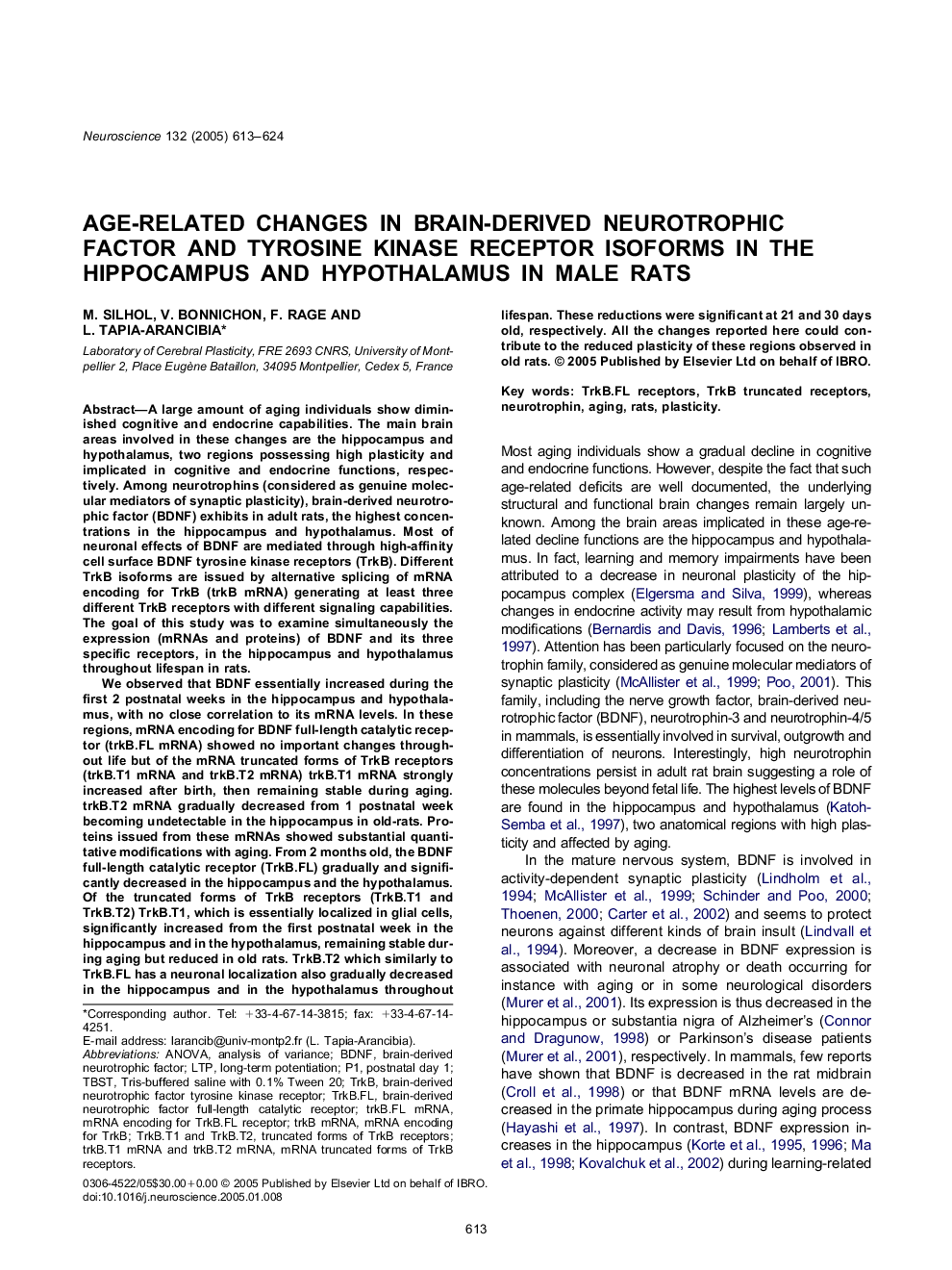| Article ID | Journal | Published Year | Pages | File Type |
|---|---|---|---|---|
| 9426717 | Neuroscience | 2005 | 12 Pages |
Abstract
We observed that BDNF essentially increased during the first 2 postnatal weeks in the hippocampus and hypothalamus, with no close correlation to its mRNA levels. In these regions, mRNA encoding for BDNF full-length catalytic receptor (trkB.FL mRNA) showed no important changes throughout life but of the mRNA truncated forms of TrkB receptors (trkB.T1 mRNA and trkB.T2 mRNA) trkB.T1 mRNA strongly increased after birth, then remaining stable during aging. trkB.T2 mRNA gradually decreased from 1 postnatal week becoming undetectable in the hippocampus in old-rats. Proteins issued from these mRNAs showed substantial quantitative modifications with aging. From 2 months old, the BDNF full-length catalytic receptor (TrkB.FL) gradually and significantly decreased in the hippocampus and the hypothalamus. Of the truncated forms of TrkB receptors (TrkB.T1 and TrkB.T2) TrkB.T1, which is essentially localized in glial cells, significantly increased from the first postnatal week in the hippocampus and in the hypothalamus, remaining stable during aging but reduced in old rats. TrkB.T2 which similarly to TrkB.FL has a neuronal localization also gradually decreased in the hippocampus and in the hypothalamus throughout lifespan. These reductions were significant at 21 and 30 days old, respectively. All the changes reported here could contribute to the reduced plasticity of these regions observed in old rats.
Keywords
Related Topics
Life Sciences
Neuroscience
Neuroscience (General)
Authors
M. Silhol, V. Bonnichon, F. Rage, L. Tapia-Arancibia,
